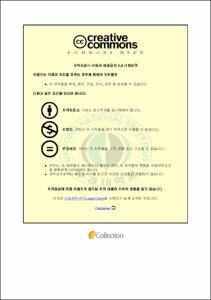RTGC 주행제어를 위한 계측시스템 및 제어계 설계에 관한 연구
- Abstract
- In order for a port to compete internationally, one of the requirements is to secure the capacity to handle logistics, ensuring quick delivery worldwide. In this sense, efforts to develop automated container cranes play the key role in increasing global competitive edges through enhanced efficiency in the system of port operations.
RMGCs(Rail Mounted Gantry Crane) and RTGCs(Rubber Tired Gantry Crane) , both of which are equipment widely used in container terminal, are distinct from others in that they provide some measure of autonomy in handling containers. Their importance is increasingly growing due to the stronger demand for autonomic mobility requiring unmanned technology even though they have some shortcomings including sway movements that may cause work delays. In this context it seems to be quite a logical step to develop technology to enhance their capacity to deal with cargos. Nevertheless, there is lack of a systematic R&D in the RTGC. This may be attributed to the fact that when its automation is sought, a rubber tired driven RTGC requires more environmental variables to be considered compared to a rail mounted RMGC as it has possible problems such as occurrence of location errors and its own angle of skew when standing still. Also, for that reason, concerns have arisen over lack of reliability, leading to a still low level of its automation.
Tracking control must be placed in the first order of priority for the automation of RTGCs. This issue concerns high speed, high accuracy path following in a given port yard. To attain this specific purpose, it is required to measure both the displacement and angle of trajectory to the crane. Of many measuring methods, the method using just a camera and a white guide line on the ground is the simplest with low costs for installation and operation. It has also the advantage of easy change of crane trajectory when necessary. Yet, there are many obstacles to be overcome such as paint exfoliation on the surface of guide line due to light or weather condition change and aging degradation. Because of limitations of technology to accomodate such external effects, a measuring method using a magnetic sensor prevails over the camera-based method, but the latter is still strongly preferred owing to its more flexibility in practical application.
This study proposed a camera-based guide line measurement system that is designed to be robust to external environmental impacts such as light condition change or paint exfoliation. This system, consisting of a black and white camera installed at the bottom of the crane's side and a PC for processing images, identifies the right and left edge of the guide line from the input image data and obtains linear parameters for the both edges using Hough conversion. In this study, from these parameters, the total displacement (both the displacement and angle of trajectory to the crane) was calculated in relation to the guide line. This proposed system was validated to be able to provide robust resistance against light condition change or cracks on the white guide line and the resulting high accuracy measures.
In designing a position control system, this study adopted two design approaches, the 2DOF servo system approach and the sliding mode servo system approach, both of which are robust in the presence of model errors or disturbances and allow cranes to follow the set paths with high accuracy. Indeed, the 2DOF design approach, which is based on feedback design principles, requires all information regarding the system status, meaning that there needs to have a monitor installed to estimate the current status, and the tracking control system designed following the required experiments needs to be validated using the obtained information. On the other hand, the sliding mode approach to control design usually involves situations calling for more robust control of nonlinear controlled objects systems, where the system state parameters can be adjusted to ensure maintaining a predefined sliding motion in the phase space, thus resulting in effectively reducing the effects of dynamic model errors or disturbances. The validation of the control system was made by analysis of the results obtained from simulations and experiments.
- Issued Date
- 2011
- Awarded Date
- 2011. 8
- Type
- Dissertation
- Publisher
- 부경대학교 대학원
- Alternative Author(s)
- Jeong, Ji Hyun
- Affiliation
- 부경대학교 대학원
- Department
- 대학원 제어기계공학과
- Advisor
- 장지성
- Table Of Contents
- Abstract ⅳ
기호설명 ⅶ
제 1 장 서 론 1
1.1 연구의 배경 및 필요성 1
1.2 연구의 목적 2
1.3 논문의 구성 2
제 2 장 RTGC 운동역학 해석 4
2.1 제어대상 및 시스템 표현 4
2.1.1 모델링 4
2.1.2 전체시스템 표현 8
2.2 파라미터 추정 및 주행제어 알고리즘 10
2.3 비홀로노믹 구속조건을 이용한 모델링 15
2.3.1 운동학적 모델링 16
2.3.2 동력학적 모델링 18
제 3 장 무인운전을 위한 계측․제어 시스템 22
3.1 계측 시스템 22
3.1.1 화상처리에 의한 가이드라인 위치 계측 23
3.1.2 에지검출 26
3.1.3 Hough 변환 27
3.1.4 위치계측 29
3.2 제어계 설계 31
3.2.1 2자유도 서보계 31
3.2.1.1 관측기 없는 2자유도 서보계 31
3.2.1.2 관측기 있는 2자유도 서보계 39
3.2.2 슬라이딩 모드 서보계 41
3.2.2.1 슬라이딩 모드 이론 42
3.2.2.2 슬라이딩 평면 설계법 46
3.2.2.3 비홀로노믹 구속조건을 이용한 슬라이딩 평면 설계법 50
제 4 장 실 험 54
4.1 계측시스템 실험 및 결과 고찰 54
4.2 2자유도 서보계 실험 60
4.2.1 시뮬레이션 60
4.2.2 실험 및 결과 고찰 64
4.3 슬라이딩 모드 서보계 실험 68
4.3.1 시뮬레이션 68
4.3.1.1 일반화된 운동방정식 이용 68
4.3.1.2 비홀로노믹 구속조건 이용 73
4.3.2 실험 및 결과 고찰 76
제 5 장 결 론 83
참 고 문 헌 85
- Degree
- Doctor
- Files in This Item:
-
-
Download
 RTGC 주행제어를 위한 계측시스템 및 제어계 설계에 관한 연구.pdf
기타 데이터 / 9.9 MB / Adobe PDF
RTGC 주행제어를 위한 계측시스템 및 제어계 설계에 관한 연구.pdf
기타 데이터 / 9.9 MB / Adobe PDF
-
Items in Repository are protected by copyright, with all rights reserved, unless otherwise indicated.